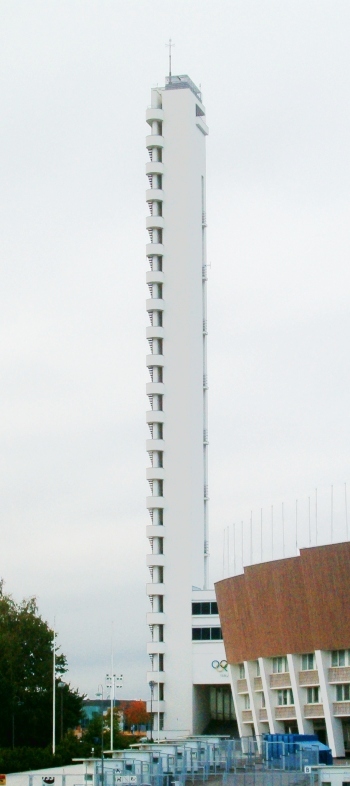|
Reyner Banham
Peter Reyner Banham Hon. FRIBA (2 March 1922 – 19 March 1988) was an English architectural critic and writer best known for his theoretical treatise ''Theory and Design in the First Machine Age'' (1960) and for his 1971 book ''Los Angeles: The Architecture of Four Ecologies''. In the latter he categorized the Los Angeles experience into four ecological models (Surfurbia, Foothills, The Plains of Id, and Autopia) and explored the distinct architectural cultures of each. A frequent visitor to the United States from the early 1960s, he relocated there in 1976. Early life and education eterReyner Banham was born in Norwich, England to Percy Banham, a gas engineer, and Violet Frances Maud Reyner. He was educated at Norwich School and gained an engineering scholarship with the Bristol Aeroplane Company, where he spent much of the Second World War. In Norwich he gave art lectures, wrote reviews for the local paper and was involved with the Maddermarket Theatre. In 1949 Banha ... [...More Info...] [...Related Items...] OR: [Wikipedia] [Google] [Baidu] |
Norwich
Norwich () is a cathedral city and district of Norfolk, England, of which it is the county town. Norwich is by the River Wensum, about north-east of London, north of Ipswich and east of Peterborough. As the seat of the Episcopal see, See of Norwich, with one of the country's largest medieval cathedrals, it is the largest settlement and has the largest Norwich built-up area, urban area in East Anglia. The population of the Norwich City Council local authority area was estimated to be 144,000 in 2021, which was an increase from 143,135 in 2019. The wider Norwich Built-up area, built-up area had a population of 213,166 in 2019. Heritage and status Norwich claims to be the most complete medieval city in the United Kingdom. It includes cobbled streets such as Elm Hill, Norwich, Elm Hill, Timber Hill and Tombland; ancient buildings such as St Andrew's and Blackfriars' Hall, Norwich, St Andrew's Hall; half-timbered houses such as Dragon Hall, Norwich, Dragon Hall, Norwich Guildhal ... [...More Info...] [...Related Items...] OR: [Wikipedia] [Google] [Baidu] |
ArtReview
''ArtReview'' is an international contemporary art magazine based in London, founded in 1948. Its sister publication, ''ArtReview Asia'', was established in 2013. History Launched as a fortnightly broadsheet in February 1949 by a retired country medical practitioner, Dr Richard Gainsborough, and the first edition was designed by his wife, the artist Eileen Mayo, ''Arts News and Review'' set out to champion contemporary art in Britain, providing its readers with commentary, news and reviews. At the outset its focus was set firmly on the artist – its regular cover ‘Portrait of the artist’ introduced its readership to emerging artists as well as reconnecting with the past masters of modernism from before the war. Cover artists included Édouard Manet, Henry Moore, Barbara Hepworth and Lucian Freud. As its editorial would declare in 1954, Art News and Review's purpose was ‘to stimulate the criticism of contemporary art, to give to both painters and writers space they would nev ... [...More Info...] [...Related Items...] OR: [Wikipedia] [Google] [Baidu] |
Environmentalism
Environmentalism or environmental rights is a broad Philosophy of life, philosophy, ideology, and social movement regarding concerns for environmental protection and improvement of the health of the environment (biophysical), environment, particularly as the measure for this health seeks to incorporate the impact of changes to the environment on humans, animals, plants and non-living matter. While environmentalism focuses more on the environmental and nature-related aspects of Green politics, green ideology and politics, ecologism combines the ideology of Social ecology (theory), social ecology and environmentalism. ''Ecologism'' is more commonly used in continental European languages, while ''environmentalism'' is more commonly used in English but the words have slightly different connotations. Environmentalism advocates the preservation, restoration and improvement of the natural environment and critical Earth system science, earth system elements or processes such as the cl ... [...More Info...] [...Related Items...] OR: [Wikipedia] [Google] [Baidu] |
Archigram
Archigram was an avant-garde architectural group formed in the 1960s that was neofuturistic, anti-heroic and pro-consumerist, drawing inspiration from technology in order to create a new reality that was solely expressed through hypothetical projects. Based at the Architectural Association in London, the main members of the group were Peter Cook, Warren Chalk, Ron Herron, Dennis Crompton, Michael Webb and David Greene. Designer Theo Crosby was the "hidden hand" behind the group. He gave them coverage in ''Architectural Design'' magazine (where he was an editor from 1953–62), brought them to the attention of the Institute of Contemporary Arts (ICA) in London, where, in 1963, they mounted an exhibition called ''Living City'', and in 1964 brought them into the Taylor Woodrow Design Group, which he headed, to take on experimental projects. The pamphlet ''Archigram I'' was printed in 1961 to proclaim their ideas. Committed to a 'high tech', light weight, infra-structural app ... [...More Info...] [...Related Items...] OR: [Wikipedia] [Google] [Baidu] |
Peter Cook (architect)
Sir Peter Cook (born 22 October 1936) is an English architect, lecturer and writer on architectural subjects. He was a founder of Archigram, and was knighted in 2007 by the Queen for his services to architecture and teaching. He is also a Royal Academician and a Commandeur de l'Ordre des Arts et des Lettres of the French Republic. His achievements with Archigram were recognised by the Royal Institute of British Architects in 2004, when the group was awarded the Royal Gold Medal. Early life and education Cook was born in Southend-on-Sea, Essex and studied architecture at Bournemouth College of Art from 1953–58. He then entered the Architectural Association School of Architecture in London, graduating in 1960. Career Cook was a director of London's Institute of Contemporary Arts (1970-1972) and chair of architecture at the Bartlett School of Architecture at University College London (1990–2006), and has been director of Art Net in London and curator of the British Pavilion ... [...More Info...] [...Related Items...] OR: [Wikipedia] [Google] [Baidu] |
Cedric Price
Cedric Price FRIBA (11 September 1934 – 10 August 2003) was an English architect and influential teacher and writer on architecture. The son of an architect (A.G. Price, who worked with Harry Weedon), Price was born in Stone, Staffordshire and studied architecture at Cambridge University ( St John's College – graduating in 1955) and the Architectural Association School of Architecture in London, where he encountered, and was influenced by, the modernist architect and urban planner Arthur Korn.Melvin J. 2003.Obituary: Cedric Price, Hugely creative architect ahead of his time in promoting themes of lifelong learning and brownfield regeneration. ''The Guardian'', 15 August 2003. From 1958 to 1964 he taught part-time at the AA and at the Council of Industrial Design. He later founded ''Polyark'', an architectural schools network. After graduating, Price worked briefly for Erno Goldfinger, Denys Lasdun, the partnership of Maxwell Fry and Jane Drew, and applied unsuccessfull ... [...More Info...] [...Related Items...] OR: [Wikipedia] [Google] [Baidu] |
Air Conditioning
Air conditioning, often abbreviated as A/C or AC, is the process of removing heat from an enclosed space to achieve a more comfortable interior environment (sometimes referred to as 'comfort cooling') and in some cases also strictly controlling the humidity of internal air. Air conditioning can be achieved using a mechanical 'air conditioner' or alternatively a variety of other methods, including passive cooling or ventilative cooling. Air conditioning is a member of a family of systems and techniques that provide Heating, ventilation, and air conditioning, heating, ventilation, and air conditioning (HVAC). Heat pumps are similar in many ways to air conditioners, but use a reversing valve to allow them to both heat and also cool an enclosed space. Air conditioners, which typically use vapor-compression refrigeration, range in size from small units used within vehicles or single rooms to massive units that can cool large buildings. Air source heat pumps, which can be used for heat ... [...More Info...] [...Related Items...] OR: [Wikipedia] [Google] [Baidu] |
Mass Consumption
Consumerism is a social and economic order that encourages the acquisition of goods and services in ever-increasing amounts. With the Industrial Revolution, but particularly in the 20th century, mass production led to overproduction—the supply of goods would grow beyond consumer demand, and so manufacturers turned to planned obsolescence and advertising to manipulate consumer spending. In 1899, a book on consumerism published by Thorstein Veblen, called '' The Theory of the Leisure Class'', examined the widespread values and economic institutions emerging along with the widespread "leisure time" at the beginning of the 20th century. In it, Veblen "views the activities and spending habits of this leisure class in terms of conspicuous and vicarious consumption and waste. Both relate to the display of status and not to functionality or usefulness." In economics, consumerism may refer to economic policies that emphasise consumption. In an abstract sense, it is the consideratio ... [...More Info...] [...Related Items...] OR: [Wikipedia] [Google] [Baidu] |
Functionalism (architecture)
In architecture, functionalism is the principle that buildings should be designed based solely on their purpose and function. This principle is a matter of confusion and controversy within the profession, particularly in regard to modern architecture, as it is less self-evident than it first appears. The theoretical articulation of functionalism in buildings can be traced back to the Vitruvian triad, where ''utilitas'' (variously translated as 'commodity', 'convenience', or 'utility') stands alongside ''firmitas'' (firmness) and ''venustas'' (beauty) as one of three classic goals of architecture. Functionalist views were typical of some Gothic Revival architects. In particular, Augustus Welby Pugin wrote that "there should be no features about a building which are not necessary for convenience, construction, or propriety" and "all ornament should consist of enrichment of the essential construction of the building". In the wake of World War I, an international functionalist ar ... [...More Info...] [...Related Items...] OR: [Wikipedia] [Google] [Baidu] |
Modernism
Modernism is both a philosophical and arts movement that arose from broad transformations in Western society during the late 19th and early 20th centuries. The movement reflected a desire for the creation of new forms of art, philosophy, and social organization which reflected the newly emerging industrial world, including features such as urbanization, architecture, new technologies, and war. Artists attempted to depart from traditional forms of art, which they considered outdated or obsolete. The poet Ezra Pound's 1934 injunction to "Make it New" was the touchstone of the movement's approach. Modernist innovations included abstract art, the stream-of-consciousness novel, montage cinema, atonal and twelve-tone music, divisionist painting and modern architecture. Modernism explicitly rejected the ideology of realism and made use of the works of the past by the employment of reprise, incorporation, rewriting, recapitulation, revision and parody. Modernism also rej ... [...More Info...] [...Related Items...] OR: [Wikipedia] [Google] [Baidu] |







